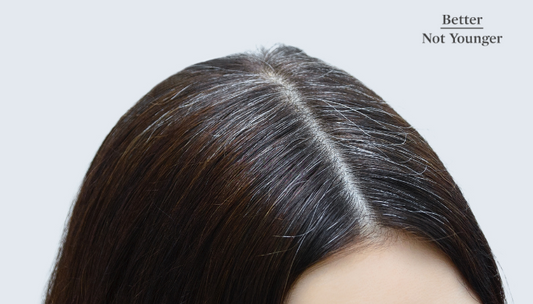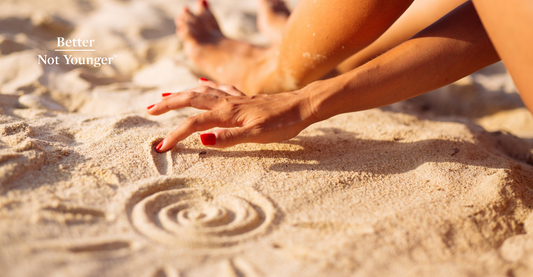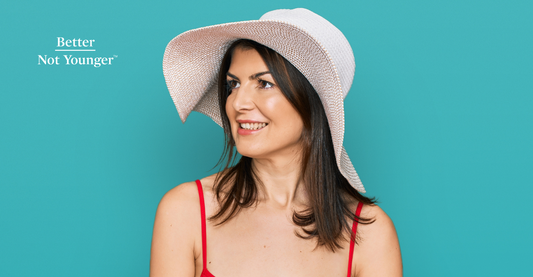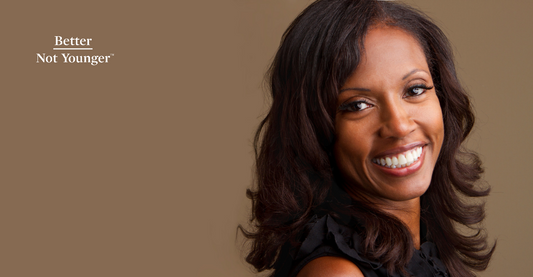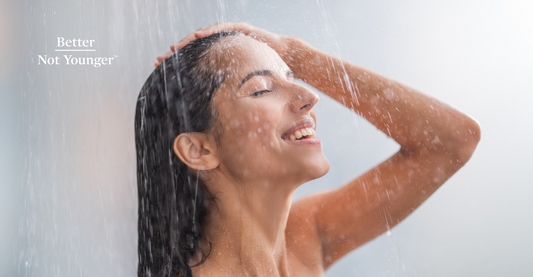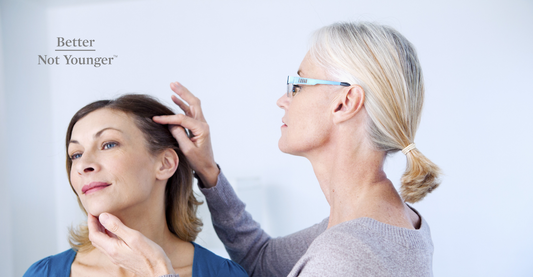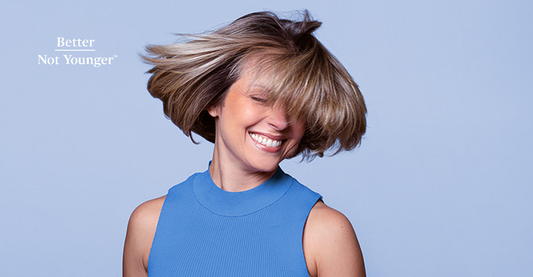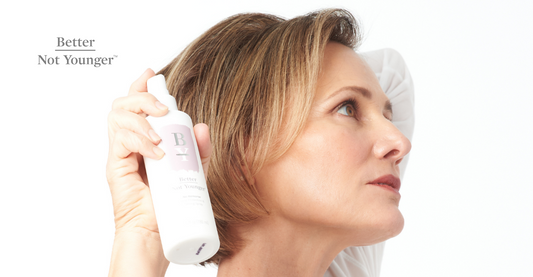The Better Blog
How to Hide Gray Hair On Brunettes
How to Get Brassiness Out of Your Hair
Does Argan Oil Protect Hair from Heat?
By now, most of us are pros at styling our hair. After all, we've had decades of trial and error with it! But identifying the right products to protect our hair from the high temperatures of curling irons, flat irons and other heat stylers might be less clear to us.
Argan oil has been generating buzz lately for its hydrating and heat-protecting properties. Those who swear by argan oil claim that it's an excellent heat and hairstyle protector. But does argan oil as a heat protectant live up to the hype?
Is argan oil a good choice for hair heat protection? And does it do anything else for our hair besides offering heat protection? Read on to learn more about what argan oil can do for your ha
7 Signs You Have Sun-Damaged Hair
There's nothing like the feeling of the sun on our skin on a warm summer day! Soaking up the sun's vitamin D is good for us. But the sun's effect on our hair? Not so good. The sun's UVA and UVB rays can damage and weaken our hair cuticles, leaving us with hair that is more susceptible to dryness, brittleness and breakage.
But don't worry—this doesn't mean you have to forgo the sun entirely this summer!
We dive into exactly how the sun affects our hair, along with the signs of sun-damaged hair to look out for this summer so you can adapt your summer hair-care routine accordingly. Read on to learn more about sun-damaged hair treatments and how to prevent UV hair damage!
How to Protect Your Hair and Scalp from the Sun
It's no secret that you should protect your hair from the sun, especially in the summer. Leaving your hair unprotected can lead to damage like brittleness and dryness while also resulting in a scalp burn from the sun. (Our hair isn't as protective of our sensitive scalp skin as we think—and this is especially true if we have thinning hair.)
This is why it's important to take a two-pronged approach to sun protection for your hair and scalp. This means using sunscreen and a heat protectant along with physical barriers like wide-brimmed hats and umbrellas to block the sun and provide UV protection for your hair and scalp.
Read on for tips to prevent UV damage to your hair, scalp burn from the sun, and what to do if you're already dealing with a sun-damaged scalp!
How to Hydrate Your Dry Hair in the Summer Heat
The height of summer means the hottest days of the year, and depending on where you live, those days could be full of humidity or as dry as the desert. But either way, summer means more sweat, and more sweat usually means extra showers.
So whether you mean to or not, if you have a habit of washing your hair every time you shower, there’s a good chance your extra showers are actually depleting your scalp of healthy oils and leaving your hair feeling dry and brittle.
Summertime also means you’re likely to find yourself relaxing by the pool or at the beach. The sun, chlorine and saltwater you’ll undoubtedly encounter will all play a part in creating your dry summer hair. Learning to be proactive and protect your hair from dehydration isn’t so different from surviving summer when you have thinning hair. Remember that natural oils are healthy and swim caps can save you from a headache later on down the road.
Should I Wash My Hair More in the Summer?
We've all heard that we shouldn't wash our hair daily, but what about when it's hot outside? We're more active outdoors in the summertime, which means more sweat and grease on our scalp. It feels good to take a nice, cool shower after being outside on a hot summer day. But how often should we wash our hair in the summer?
The answer hinges on a couple of factors. How many times a week you should wash your hair in the summer is dependent on your hair type and your activity levels. If you're doing a lot of high-intensity cardio outdoors, you may need to wash your hair more frequently than someone spending most of her days indoors.
We put together a guide to help you determine how often you should wash your hair in the summer, along with some pro tips to help you get by between wash days no matter your hair type! Read on to learn more about the ideal shampooing frequency for your hair type and summer activities!
Pro Tips for Preventing Your Hair Color from Fading
How Seasonal Allergies Affect Your Hair and Scalp
Spring is in full swing! We love the longer days and warmer weather, but with the seasonal shift comes the seasonal allergies we don't love.
We know that the uptick in pollen, mold and ragweed in the spring can cause sneezing and itchy, watery eyes. But did you know that seasonal allergies can also affect your scalp and hair, causing itchiness, flakiness and even hair loss? Yikes!
Keep reading as we answer your biggest questions about seasonal allergies and hair loss, scalp allergies and even how your hair itself can have an impact on your seasonal allergies.
9 Secrets to Shiny, Healthy Hair
If your hair has lost its shine, it can put a damper on your look. Glowy hair not only draws others’ eyes to you, but it can instantly make you feel more confident while it’s swishing around your head. This is why we’re letting you in on our favorite secrets to shiny, healthy hair. While heading to the salon for a glossy hair treatment is one way to boost your hair’s shine, there are things you can do right at home, too. In fact, the secrets to naturally glowy hair that’s glossy and shiny are all pretty easy to incorporate into your routine—and if you do, your aging strands will thank you.
The first step to getting coveted shiny hair? Pick out products to make hair glossy. While this is a not-so-secret secret to shiny hair, it’s one that many people don’t even realize they should do. Select shampoos and conditioners that are formulated with natural ingredients that can help you out if your hair has lost its shine. And if you already have shiny hair and just want to maintain it? Using products to make hair glossy can help you do that, too. The secret to great hair is taking care of it, which is what we’re here to help with. Your secret to shiny hair can be found right here.
Here's What You Need to Know About "Bubble Hair"
You might not know what "bubble hair" is, but if you've used heat stylers on damp or wet hair, chances are that you've dealt with the fallout from it. And if you’ve been inconsistent with using a heat protectant before blow-drying, curling or flat-ironing your locks, then you probably have some heat damage, especially at the ends of your hair. But this damage might not technically qualify as bubble hair. So how can you tell the difference?
Keep reading to learn all about the signs and consequences of bubble hair for your delicate, aging tresses. We discuss whether heat damage causes hair loss and how a heat-damaged hair treatment plan that includes routine trims at the salon and the use of a heat protectant for wet hair are essential in healing your tresses and kicking brittle, damaged hair to the curb!


